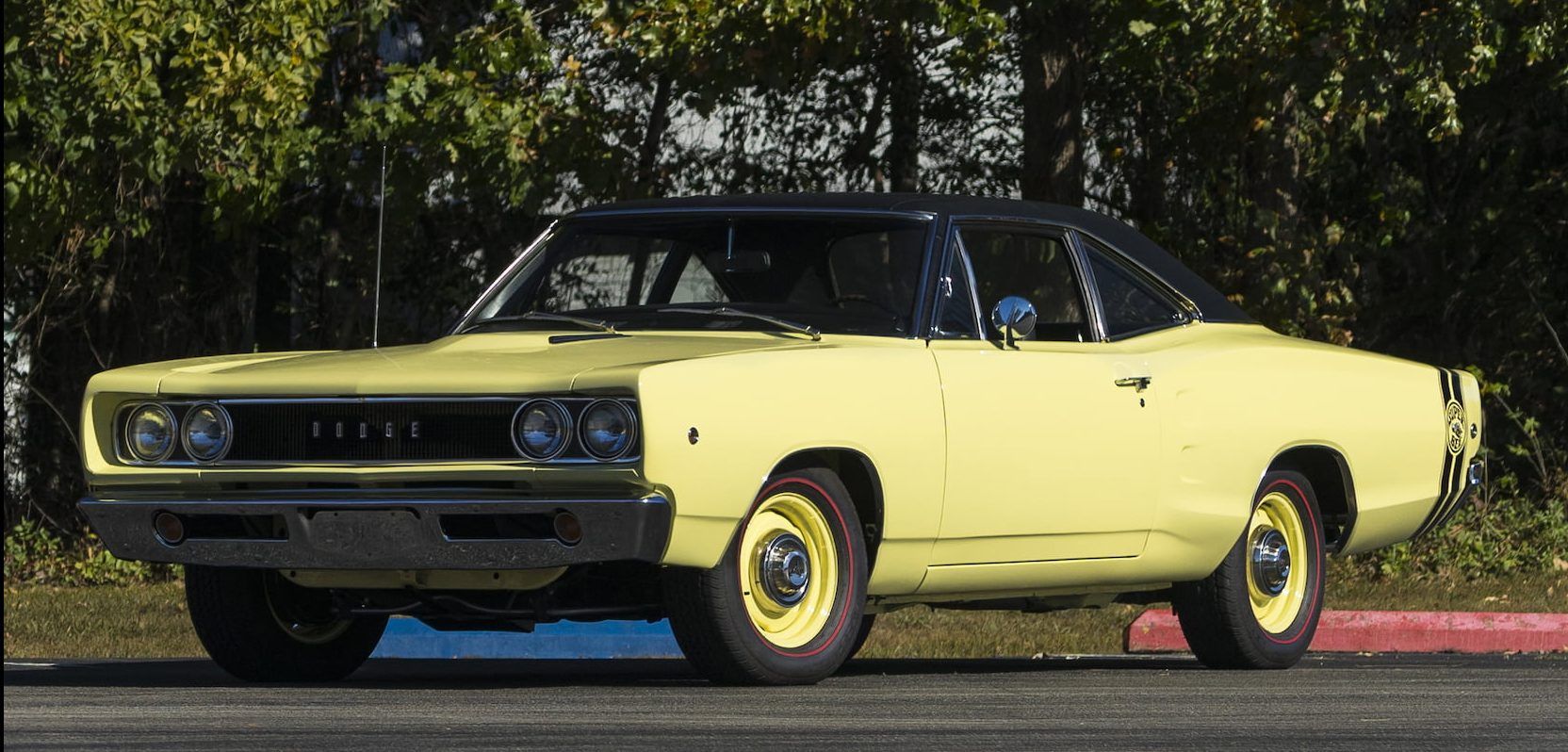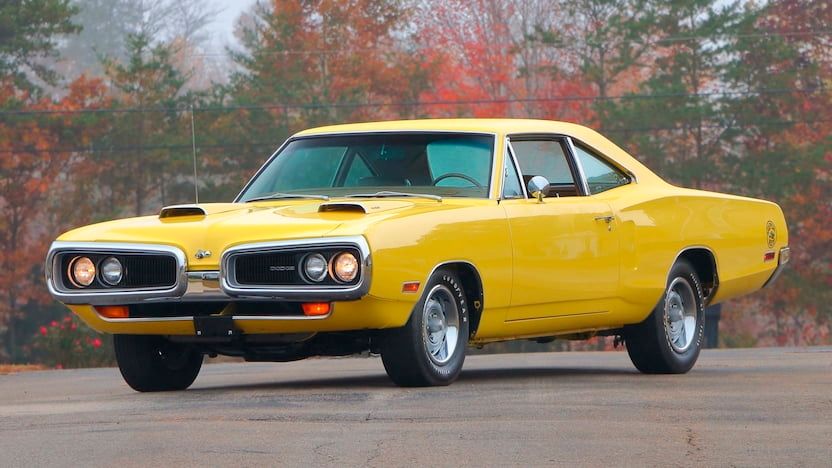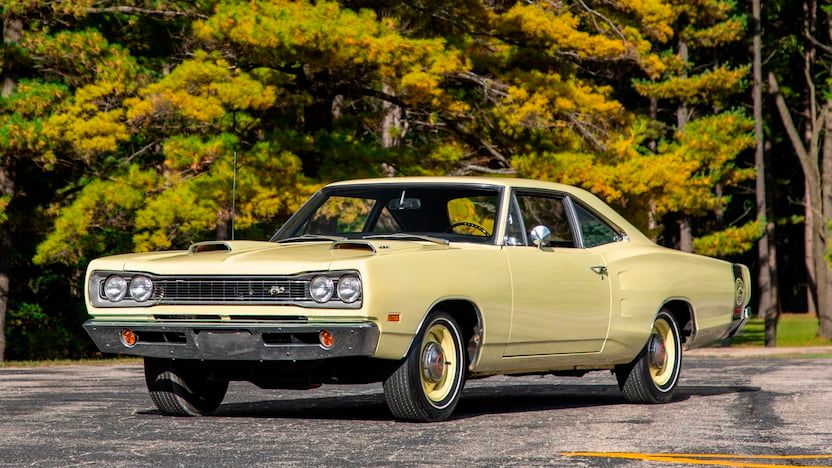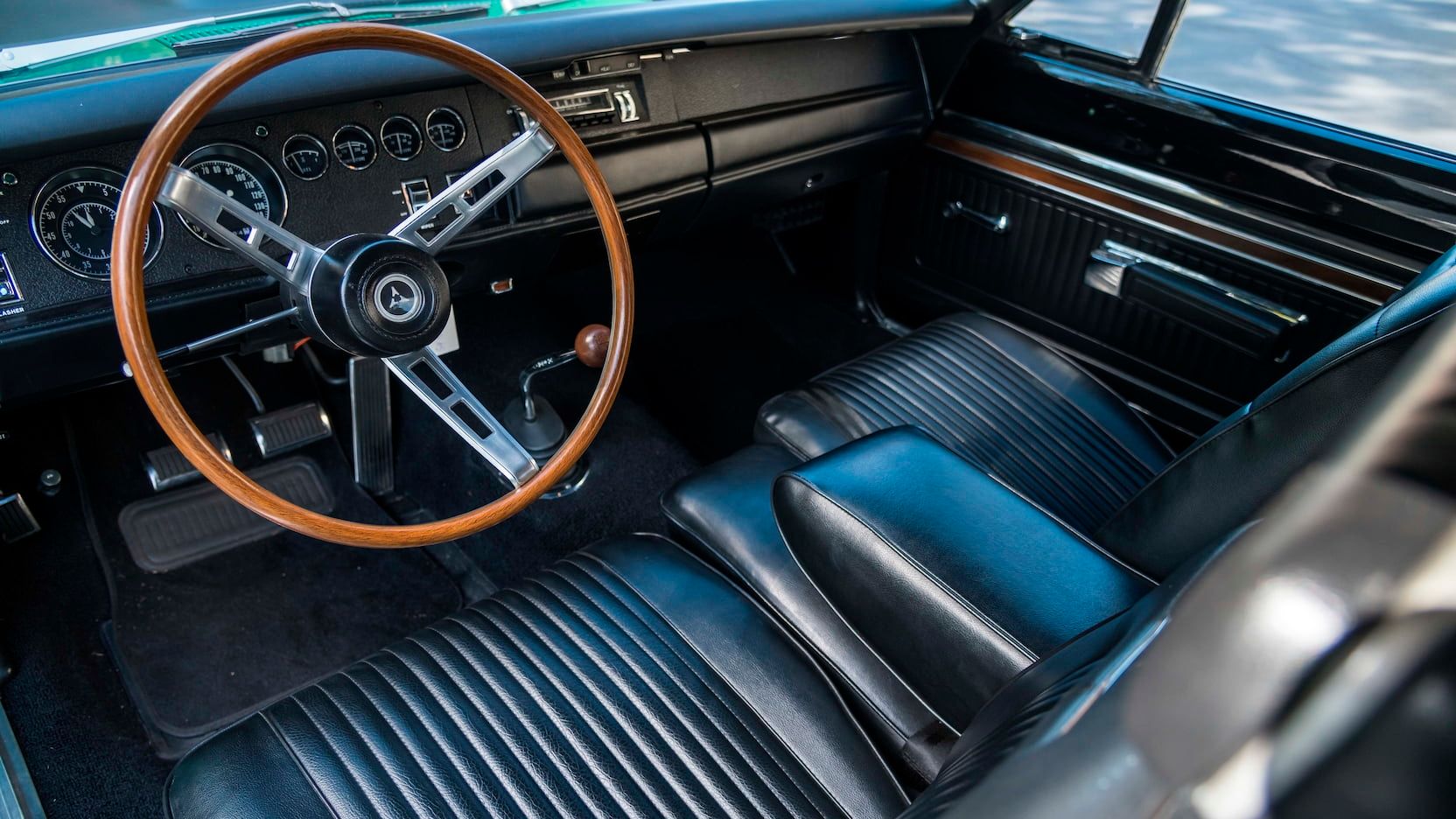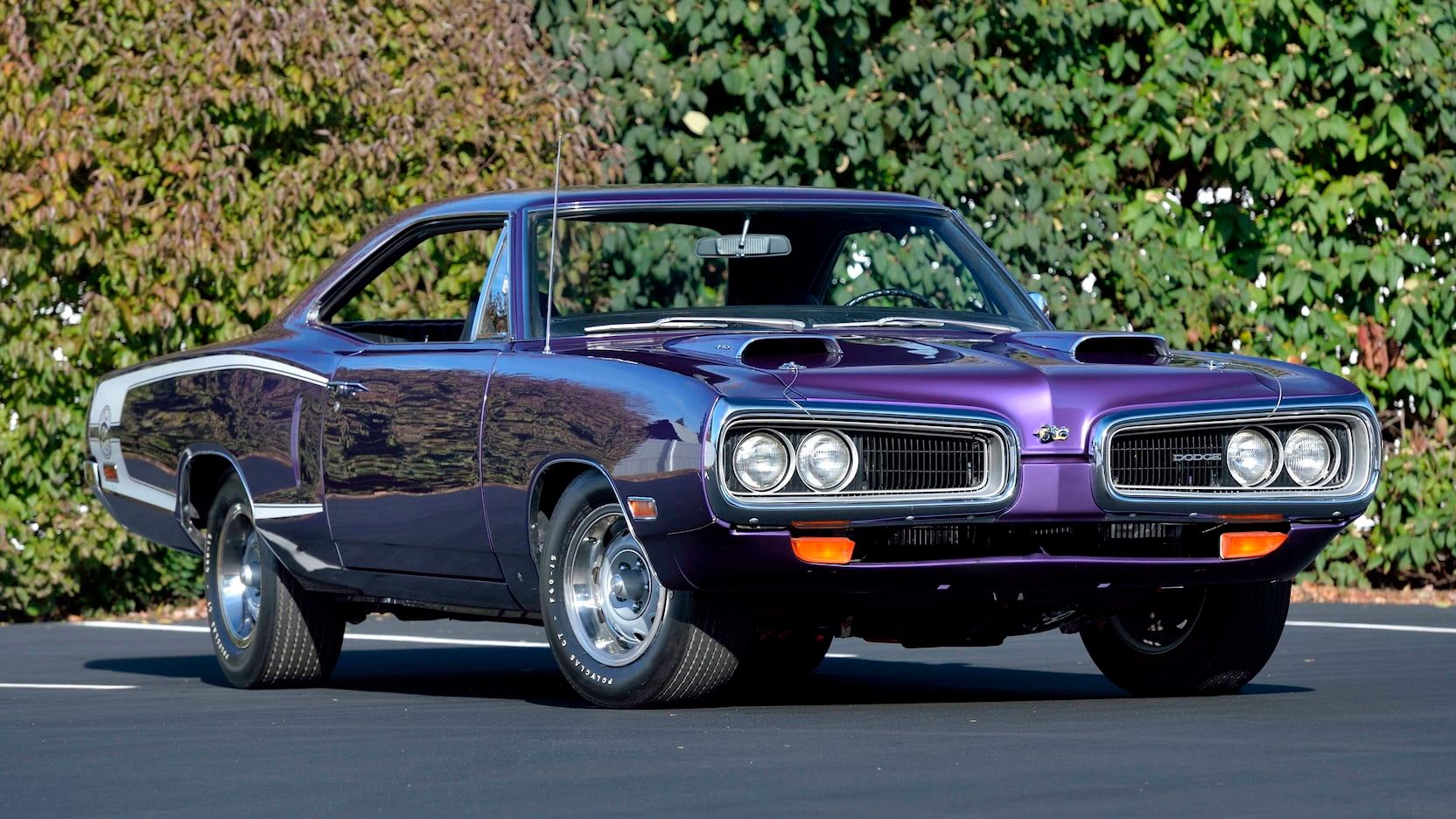When it comes to the world of classic American muscle, few time periods were as glorious as the tail end of the 1960s. Seeing some of the coolest, most unrestrained, and badass models released, many of the V8 beasts from this time hold up today as absolute legends. Among them for example, the Pontiac GTO reached a new peak, and so did most of the mid-size field including competitors like the Plymouth GTX and Ford Torino. Also seeing new growth in the realm of affordable spec muscle, Plymouth's GTX based Road Runner sparked a popular wave of similar models like the GTO Judge.
One name from this time and class of muscle car happened to be just as good but much less remembered than the competition though - the Dodge Super Bee. Essentially taking the Road Runner's formula on its debut year and turning it into a Dodge model, the Super Bee was a high-performance version of the Coronet, with a lower price tag than the existing Coronet R/T. Lasting from 1968 until 1970, the Super Bee name moved on to be attached to the Charger in '71, then died off until its 2000s Charger-based return. A work of classic muscle art, this original Coronet-based Super Bee is a highly underrated classic from the Golden Age of muscle.
A Sting Inspired By Plymouth
To understand the Super Bee, you in turn have to understand its fraternal twin brother, the Plymouth Road Runner. Back before its release, to get top-end V8 muscle you had to pay top-end dollar, with a full list of options to tick off in order to receive a desirable engine. As an example of this within Chrysler, Plymouth's GTX was a B-Body based Belvedere that came almost fully loaded with all the best trimmings, and that included the best engine, namely the 440 Super Commando or 426 Hemi.
Meanwhile, Dodge's version of the B-Body was the Coronet, and the Coronet R/T was their equivalent mid-size muscle car. None of this is too surprising though, but the pricing and necessary options for ground shaking V8s meant muscle was moving away from its straightforward performance-oriented origin, and younger buyers were priced out of the mid-size muscle field, so in 1968 Plymouth decided to change that.
Stripping the GTX of almost every option that wasn't purely focused on performance, and substituting lower-priced performance ones where possible, the first Road Runner debuted in 1968 offering GTX levels of power without the GTX price - and also was slightly lighter as a result. Powered by a 383 cu-in V8 with 4-barrel carb designed specifically for the car, the intake, heads, cam, and exhaust from the larger 440 cu-in V8 were used to bring the smaller motor to a total of 335 hp, furthermore, for a price you could also option in the 425 hp 426 cu-in Hemi V8 if you wanted a truly wicked car.
Positioned as a higher-end brand to Plymouth at the time, Dodge saw the immediate success of the Road Runner, and also that doing the same to the similarly B-Body based Coronet R/T wouldn't be difficult at all. So, in 1968 during the Road Runner's debut year, the Super Bee was launched at the Detroit Auto Show with the same formula, purpose, and platform. While the 383 V8 was meant to be only used by the Road Runner, Dodge ignored that memo and bestowed it into the Super Bee, carrying out a similar options diet to give it a lower price. While it had a slightly different front end design, 1" longer body, and dashboard from the Charger, this new Super Bee mechanically was basically the same car as the Road Runner and had that same 426 Hemi as an optional engine, and similarly raised the price by around 33%, if chosen. The main difference was the name, and the Super Bee was a clever pun (Bee = B-Body), with special badges themed around it.
Further Changes & Evolution
In regards to performance-based upgrades for the Super Bee, more than just the Roadrunner 383 V8 came standard. Offering heavy-duty drum brakes, beefier suspension components, as well as a 4-speed manual with Hurst shifter and linkages (a 3-speed Torqueflite auto was optional). Also, as a more upscale brand to Plymouth, further touches made the Super Bee a slightly more expensive alternative to the Road Runner, including previous features like the Hurst shifter and linkages, as well as aesthetic touches like 3D diecast metal Super Bee badges in contrast to the Road Runner's simple decals. With the Road Runner cheaper and just as fast, alongside the now iconic, but then newly introduced 2nd gen Charger on sale, the Super Bee just couldn't capture the Road Runner's magic when it came to sales and lagged behind.
Updated for 1969, the Super Bee looked, and was, mostly the same, only offering new bits like optional side-mounted hood scoops, as well as a new grille and headlight design. But, halfway through the year, Dodge offered a new engine for it that would make things truly awesome, the 440 cu-in Six-Pack V8 - so named for its array of three 2-barrel carbs feeding the engine. An expensive option, the 425 hp 426 cu-in Hemi saw just over a hundred buyers in the Super Bee, so, while making 35 hp less, the 390 hp 440 Six-Pack was still a huge improvement thanks to a far lower price.
Buyers of the '69 Super Bee with the Six-Pack also received a matte black fiberglass hood, distinguished by its unique Lift-Off design to prop it up, and also decked out with a truly massive scoop. Weighing in at 3,440 lbs, the Super Bee was no slouch even without the Six-Pack, hitting 0-60 mph in 7.0 seconds with a 15.3-second quarter-mile in 383 form. With that Six-Pack though, 0-60 took 6.3 seconds, and 13.8 for quarter mile, offering some great numbers for the time. 1970 saw the most dramatic styling change though, using the Coronet’s facelifted two oval grilles, called Bumble Bee Wings, this year arguably was the coolest it looked, but otherwise was the same as 1969 for engines and mechanical aspects.
A Classic Cockpit
Like the rest of 1960s muscle, the Super Bee's interior is extremely basic compared to today’s cars, stunning with details rather than a feature-packed design. Even truer thanks to its budget muscle purpose, the Super Bee was slightly higher-end than the Road Runner, but the theme of stripping options remained, though with a few nice touches to go around. Included in this, optional vinyl bucket seats and the standard Hurst shifter were cool, but the overall impact is in how straightforward and purposeful the interior is, with the Charger’s clean, rounded all-analog gauge filled dashboard looking sweet inside the Coronet, and bits like the wood steering wheel to complete the look.
In terms of spaciousness, the Super Bee was as roomy as it was powerful, even when it came to rear seats. Measuring in with 34.6” of headroom and 42” legroom for the front seats, rear passengers also got similar space with 37” of headroom and 41” of legroom. For comparison, a 2021 Dodge Charger has 38.6" of headroom and 41.8" of legroom up front, and in the back, seats get 36.6" of headroom and 40.1" of legroom - though is a 4-door design compared to the Super Bee's 2-door coupe body. Further, a huge trunk made it a great cruiser, but the massive unrefined V8 gives horrible mileage, with 10 MPG at best for the 440 Six-Pack - not that it matters when driving a muscle car.
Pricing When New, Collectability Today
Sold new in 1968, the Super Bee started at $3,027 ($23,039 today), slightly pricier than the Road Runner which started at $2,870 that year ($21,844 today). Not as well received, an estimate of around 7,800 Super Bees were made for ‘68, with only 125 of them being the 426 Hemi option.
Meanwhile, 44,559 Road Runners were made in 1968. For 1969, things improved, and 27,892 Super Bees were made, with 258 being 426 Hemis, and 1,907 being 440 Six-Packs, meanwhile, the Road Runner had around 84,000 units produced that year. In 1970, around 15,000 were sold, then for ‘71, the name moved on to the Charger as a different car with a similar purpose. Revived in the 2000s on the Charger, the Super Bee name is an iconic one for classic Mopar fans, but in the wider world, the Road Runner receives far more attention, even when new, as evident by production numbers.
But, this has a different effect in the world of collectability, marking the Super Bee as the rarer, more unique brother to the Road Runner. While a good condition 383 cu-in ‘68 Road Runner costs between $30-50,000, the same spec and condition Super Bee is around $45-65,000, 426 Hemi powered ‘68 models are incredibly rare and desirable and cost around $90-120,000 today. For '69 Super Bees, a similar 383 spec goes for around the same, while the Six-Pack model introduced that year is seriously desirable, costing upwards of $80,000 for an original one in good condition. Good original Hemi models cost even more at around $100,000 and up. ‘70 models in 383 form cost around $40,000 and up, while Six-Packs go for $60-80,000, the 426 Hemi reaches similar desirability at around $150,000.
Sources: Hemmings, Allpar, Dodgesuperbee.com

